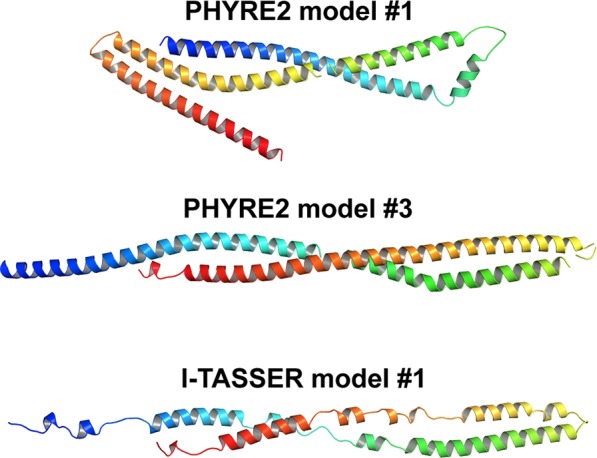Figure 3.

SIKE models predict alpha helical structure. Cartoon diagrams of SIKE models showing C‐α backbone colored from blue to red indicating N‐ to C‐terminus, respectively. PHYRE2 predicted two structures with >90% sequence coverage and confidence (probability [from 0 to 100] that the match between SIKE sequence and template is truly homologous), but sequence identity, a potential measure of model accuracy, between SIKE and template was <15% for each model. The I‐TASSER model with the highest C‐score (−1.86 on a scale of −5, 2; remaining models had values <−2.7) and cluster density (0.1486 whereas remaining four models had values <0.064, indicates structure occurs more often in simulation trajectory suggesting higher quality model) is shown. The TM‐score, scale used to measure structural similarity between two structures, is 0.49 ± 0.15, which falls between a value indicative of correct model topology (≥0.5) and random similarity (<0.17). Both programs predict α helical structure ranging from 61% to 93% that is consistent with CD spectral data.
